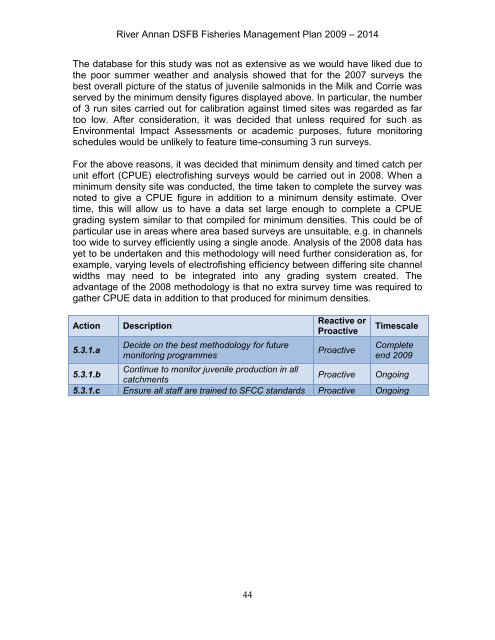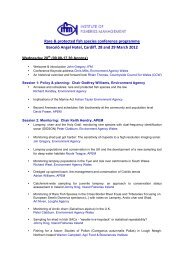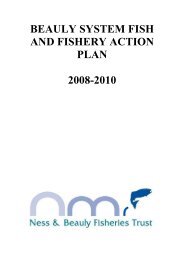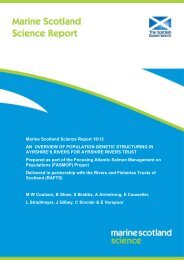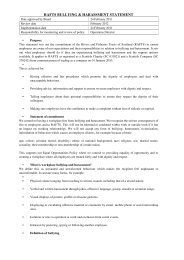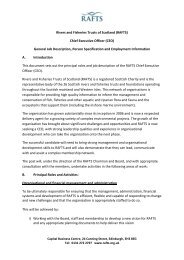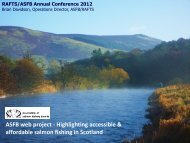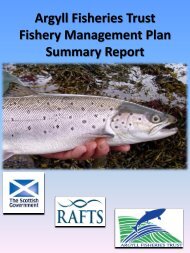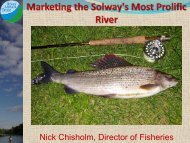Create successful ePaper yourself
Turn your PDF publications into a flip-book with our unique Google optimized e-Paper software.
River <strong>Annan</strong> DSFB Fisheries <strong>Management</strong> <strong>Plan</strong> 2009 – 2014The database for this study was not as extensive as we would have liked due tothe poor summer weather and analysis showed that for the 2007 surveys thebest overall picture of the status of juvenile salmonids in the Milk and Corrie wasserved by the minimum density figures displayed above. In particular, the numberof 3 run sites carried out for calibration against timed sites was regarded as fartoo low. After consideration, it was decided that unless required for such asEnvironmental Impact Assessments or academic purposes, future monitoringschedules would be unlikely to feature time-consuming 3 run surveys.For the above reasons, it was decided that minimum density and timed catch perunit effort (CPUE) electrofishing surveys would be carried out in 2008. When aminimum density site was conducted, the time taken to complete the survey wasnoted to give a CPUE figure in addition to a minimum density estimate. Overtime, this will allow us to have a data set large enough to complete a CPUEgrading system similar to that compiled for minimum densities. This could be ofparticular use in areas where area based surveys are unsuitable, e.g. in channelstoo wide to survey efficiently using a single anode. Analysis of the 2008 data hasyet to be undertaken and this methodology will need further consideration as, forexample, varying levels of electrofishing efficiency between differing site channelwidths may need to be integrated into any grading system created. Theadvantage of the 2008 methodology is that no extra survey time was required togather CPUE data in addition to that produced for minimum densities.Action5.3.1.aDescriptionDecide on the best methodology for futuremonitoring programmesReactive orProactiveProactiveTimescaleCompleteend 20095.3.1.bContinue to monitor juvenile production in allcatchmentsProactive Ongoing5.3.1.c Ensure all staff are trained to SFCC standards Proactive Ongoing44


